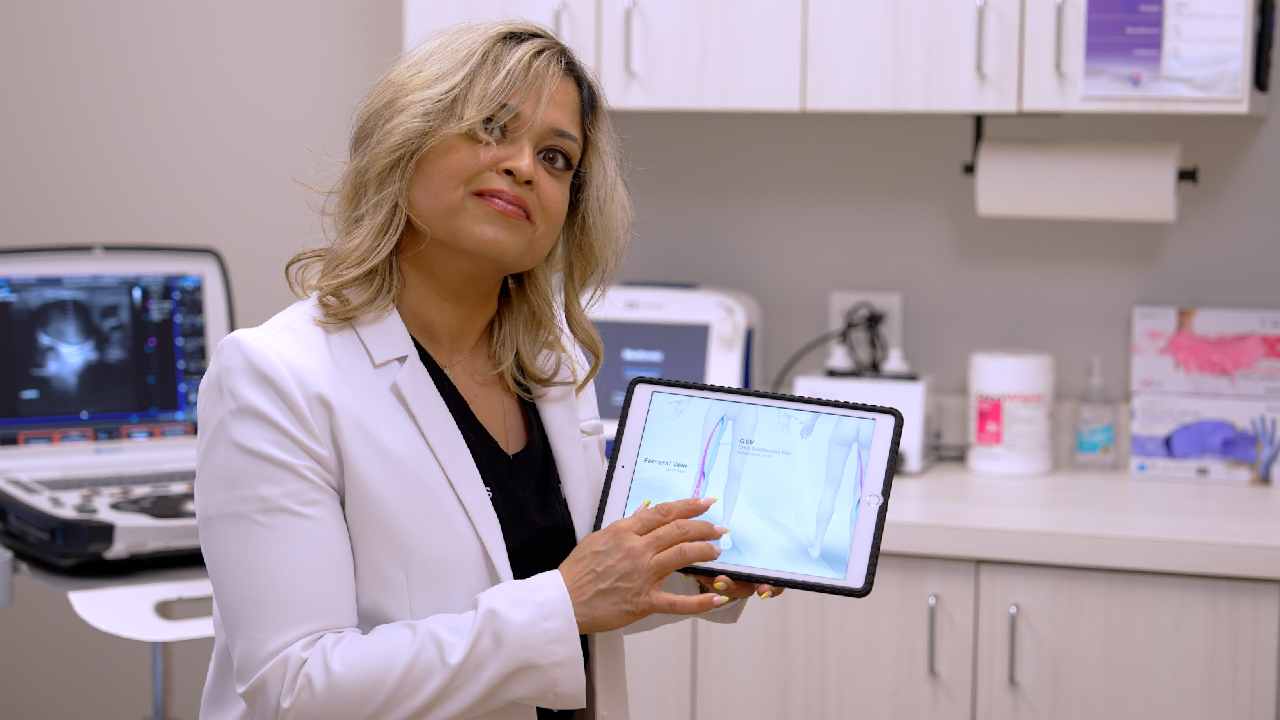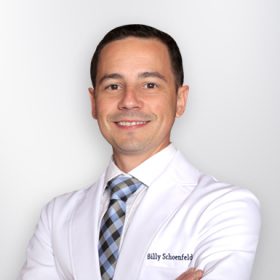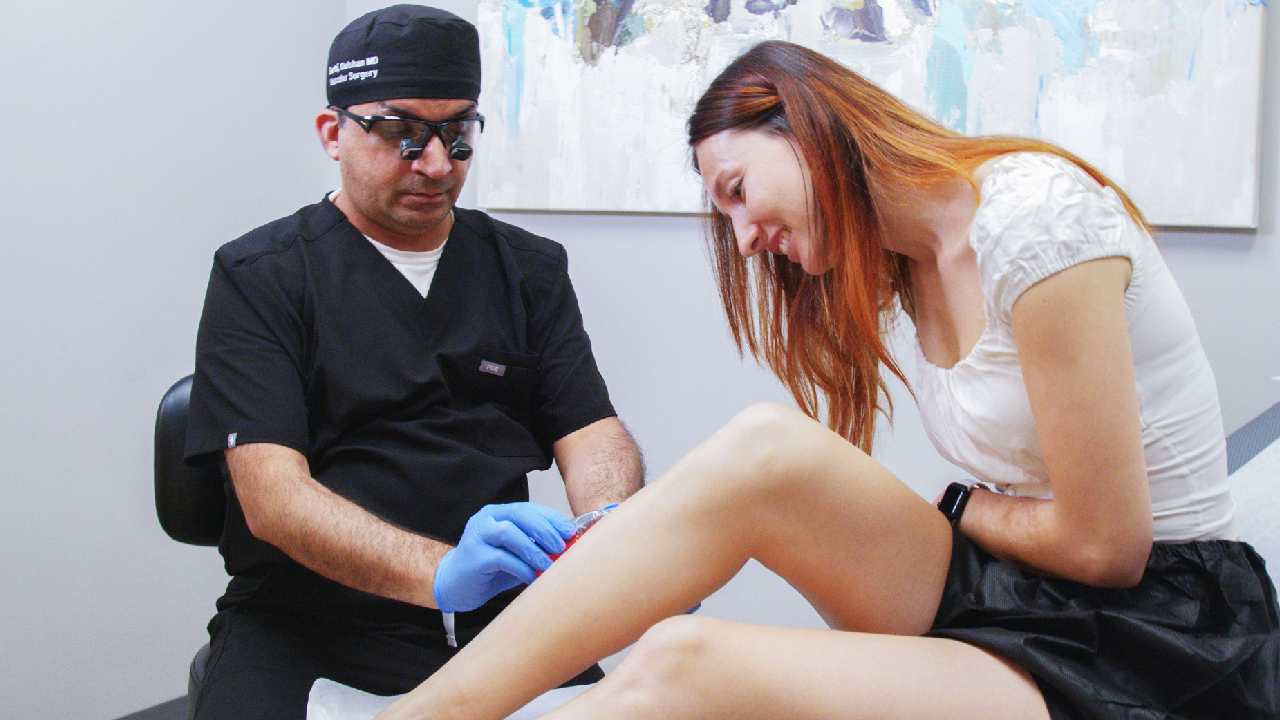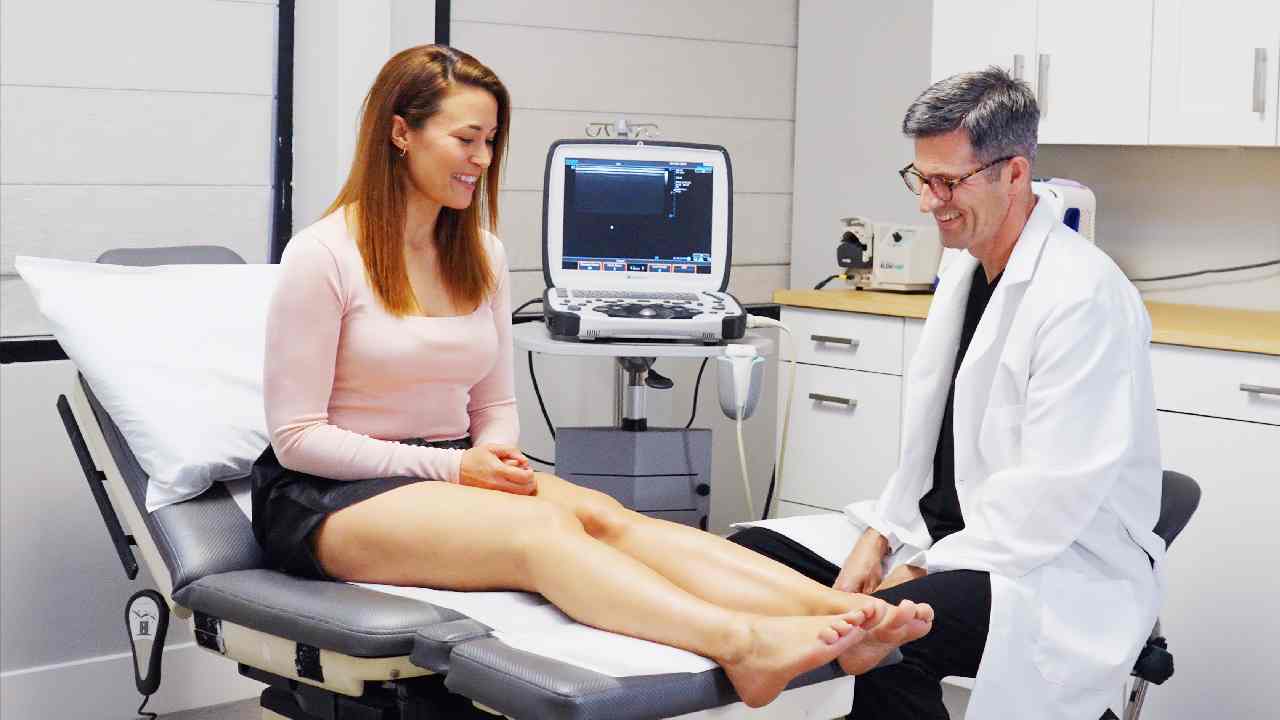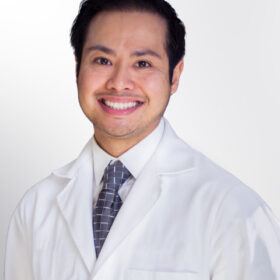
Top 5 Minimally Invasive Treatments for Spider Veins
Summary
When it comes to treating spider veins, there are several effective options to consider. These treatments are minimally invasive and can be performed with minimal downtime. In summary, the top 5 treatments for spider veins include: Sclerotherapy, Endovenous Laser Ablation (EVLA), Radiofrequency Ablation (RFA), ClariVein and VenaSeal.
Spider veins are a common cosmetic concern that many people seek to address. While these veins may not cause pain, they can be unsightly and lower your confidence. Fortunately, various minimally invasive treatments are available that can reduce or eliminate spider veins.
At Vein Treatment Clinic, we offer state-of-the-art, minimally invasive treatments for spider veins that will leave you looking and feeling your best. Our board-certified vein doctors use advanced technologies to help patients achieve smooth, healthy skin without surgery. Learn about our vein treatments at one of our locations across the country, including in New York, New Jersey, California, and Maryland. Let’s dive into the top 5 spider vein treatments.
Are you interested in getting more information about your condition or getting a treatment?
Fill the form below to start!
Sclerotherapy
Sclerotherapy is the most common spider vein treatment. It’s a quick and effective procedure that involves injecting a sclerosing agent into the veins. This agent irritates the vein lining, causing it to collapse and eventually fade from view. The treatment is minimally invasive, and patients can typically return to normal activities shortly after the procedure.
This treatment works best for small to medium-sized veins and is most often used for veins on the legs. It’s ideal for people who want to treat visible spider veins without surgery. Sclerotherapy is a quick procedure that can be done in-office with no downtime.
Endovenous Laser Ablation
Endovenous Laser Ablation (EVLA) is a highly effective treatment for varicose veins and the underlying cause of spider veins: chronic venous insufficiency. This treatment uses laser energy to heat and close the affected vein. By targeting the vein from the inside, EVLA treats the root cause, reducing the risk of spider veins returning in the future.
During the procedure, your vein doctor will insert a small catheter into the vein and use laser energy to close the vein. This is an ideal option for people with varicose veins or venous reflux. Once the vein is closed, the body naturally re-routes blood flow to healthier veins, and the treated vein is gradually absorbed by the body.
Radiofrequency Ablation
Radiofrequency Ablation (RFA) is another highly effective treatment for varicose veins and venous reflux. Like EVLA, RFA targets the underlying cause of spider veins by closing off the faulty veins. However, instead of using laser energy, RFA uses radiofrequency energy to heat and collapse the veins. This method is gentle and effective, with minimal discomfort.
RFA is often recommended for larger veins that must be closed off to improve circulation. It’s a minimally invasive procedure that can be performed in-office with a quick recovery time. RFA helps to treat varicose veins and prevents the recurrence of spider veins.
VenaSeal
VenaSeal is a newer, innovative treatment for varicose veins that uses medical adhesive to close off the affected veins. The adhesive is injected directly into the vein, causing it to seal shut and eventually be absorbed by the body. This treatment doesn’t require the use of heat or lasers, making it an attractive option for patients looking for a gentle, effective solution.
VenaSeal is highly beneficial for people with larger veins or venous reflux, as it addresses the root cause of the veins. It’s a minimally invasive procedure with little to no downtime. In fact, many patients return to normal activities immediately after treatment. If you’re seeking a non-thermal option to treat varicose veins, VenaSeal may be the right choice for you.
ClariVein
ClariVein is a unique treatment that combines mechanical and chemical methods to treat varicose veins. The procedure involves a small catheter being inserted into the vein, which is then rotated to deliver a sclerosant medication. This combination of mechanical agitation and chemical treatment makes ClariVein effective for varicose veins and venous reflux.
One of the major benefits of ClariVein is that it doesn’t use heat, making it a more comfortable option for patients who may be concerned about discomfort. The procedure is quick, and most patients can resume normal activities within a day. Like EVLA and RFA, ClariVein targets the root cause of spider veins, so it’s especially useful for patients with venous insufficiency.
FAQs
What is the best treatment for spider veins?
The best treatment for spider veins often depends on the size and location of the veins. Sclerotherapy is the most commonly used method for small, visible spider veins. However, if you have underlying venous reflux or varicose veins, your vein doctor may recommend treatments like Endovenous Laser Ablation (EVLA) or Radiofrequency Ablation (RFA).
What is the difference between varicose vein surgery and minimally invasive treatments for spider veins?
Traditional varicose vein surgery often involves vein stripping, a more invasive procedure that requires longer recovery times. Minimally invasive vein treatments, such as sclerotherapy, EVLA, and RFA, are performed in-office with little to no downtime.
Are compression stockings for varicose veins effective?
Yes, compression stockings for varicose veins can help improve circulation and reduce discomfort associated with varicose veins. However, they do not treat the underlying cause of the veins. For effective treatment for venous reflux in legs, procedures like Endovenous Laser Ablation or Radiofrequency Ablation may be necessary.
How does VenaSeal work for varicose veins?
VenaSeal uses medical adhesive to seal off varicose veins, effectively treating the root cause of venous reflux. This minimally invasive treatment is a great alternative to traditional vein surgery and requires little to no downtime.
Can vein surgery be avoided?
Yes, most patients can avoid vein surgery by opting for minimally invasive vein treatments like sclerotherapy, EVLA, RFA, VenaSeal, or ClariVein. These procedures are effective at treating both spider veins and varicose veins without the need for invasive surgery.
For more information about our spider vein treatments, contact us to schedule a consultation at one of our locations. We help you find the right treatment for your veins.
FEATURED POSTS BY VEIN DOCTORS









